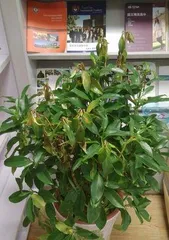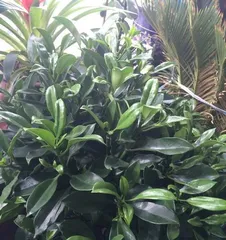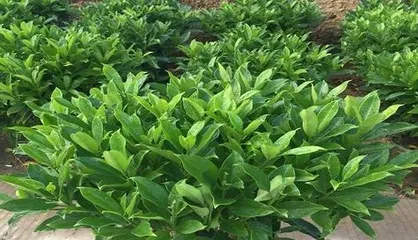African jasmine, also known as the aspirin tree, is a very beautiful ornamental plant. They bear fragrant white or pink flowers, bringing people endless joy. However, in the winter season, how should we care for them? Below, let's learn how to care for African jasmine together!

Ensure suitable temperature
In winter, African jasmine needs to be kept warm indoors. We should place them inside to avoid excessive cold. Additionally, they need warm light at night to ensure their temperature is suitable.
Pay attention to watering time
Watering is a very important part of care. In winter, African jasmine needs less water, so we need to reduce the frequency of watering. However, before watering, we need to check the soil moisture to ensure they need water before proceeding.

Keep the soil moist
Although African jasmine needs little water in winter, we still need to ensure their soil is moist. We can gently moisten the soil under the tap to maintain a certain level of humidity.
Do not over-fertilize
In winter, the growth rate of African jasmine is relatively slow, so we need to reduce the frequency of fertilization. At the same time, we should not over-fertilize, as this can have adverse effects on their growth.
Prune branches and leaves appropriately
Pruning is one of the most important care tasks. In winter, we need to appropriately prune the branches and leaves of African jasmine to ensure they can grow normally. At the same time, we can also use pruning to control their shape and size.

Avoid exposure to sunlight
In winter, African jasmine needs to avoid direct exposure to sunlight. Because the sun can cause them to lose water and get damaged, we need to place them indoors to avoid direct sunlight.
Clear fallen leaves and dead branches
In winter, African jasmine will shed some leaves and withered branches. These fallen leaves and dead branches will affect the growth of African jasmine, so we need to clear them in time to ensure their healthy growth.
Control temperature fluctuations
In winter, temperature fluctuations are a common phenomenon. This can have adverse effects on the growth of African jasmine, so we need to control these fluctuations to ensure the temperature does not change drastically.
Appropriately increase humidity
In winter, indoor air is often relatively dry, which is not good news for African jasmine. We need to appropriately increase indoor humidity to ensure their healthy growth.
Avoid overwatering
In winter, African jasmine needs a small amount of water. We need to avoid overwatering. If the soil is too wet, they are susceptible to bacterial and fungal infections, which can lead to their death.
Choose suitable fertilizer
In winter, we need to choose suitable fertilizers to supply the nutrients African jasmine needs. Generally, we can use some fertilizers containing potassium, which is very beneficial for the growth of African jasmine.
Pay attention to water balance
In winter, the growth rate of African jasmine is relatively slow, so we need to maintain a water balance. This means we need to find a good balance between watering and fertilizing to ensure African jasmine gets enough water and nutrients.
Regularly replace the soil
In winter, we need to regularly replace the soil of African jasmine to ensure they get enough nutrients and water. At the same time, replacing the soil can also prevent the growth of bacteria and fungi, thereby ensuring their healthy growth.
Prevent pests and diseases
In winter, African jasmine is susceptible to pests and diseases. We need to take some measures, such as spraying insecticides and increasing ventilation, to prevent the breeding of pests and diseases.
Winter is a critical period for the growth of African jasmine. If we can master the appropriate care methods, we can ensure that African jasmine grows healthily during the winter. Through the 15 care methods introduced in this article, I believe everyone has mastered the skills of how to care for African jasmine in winter!